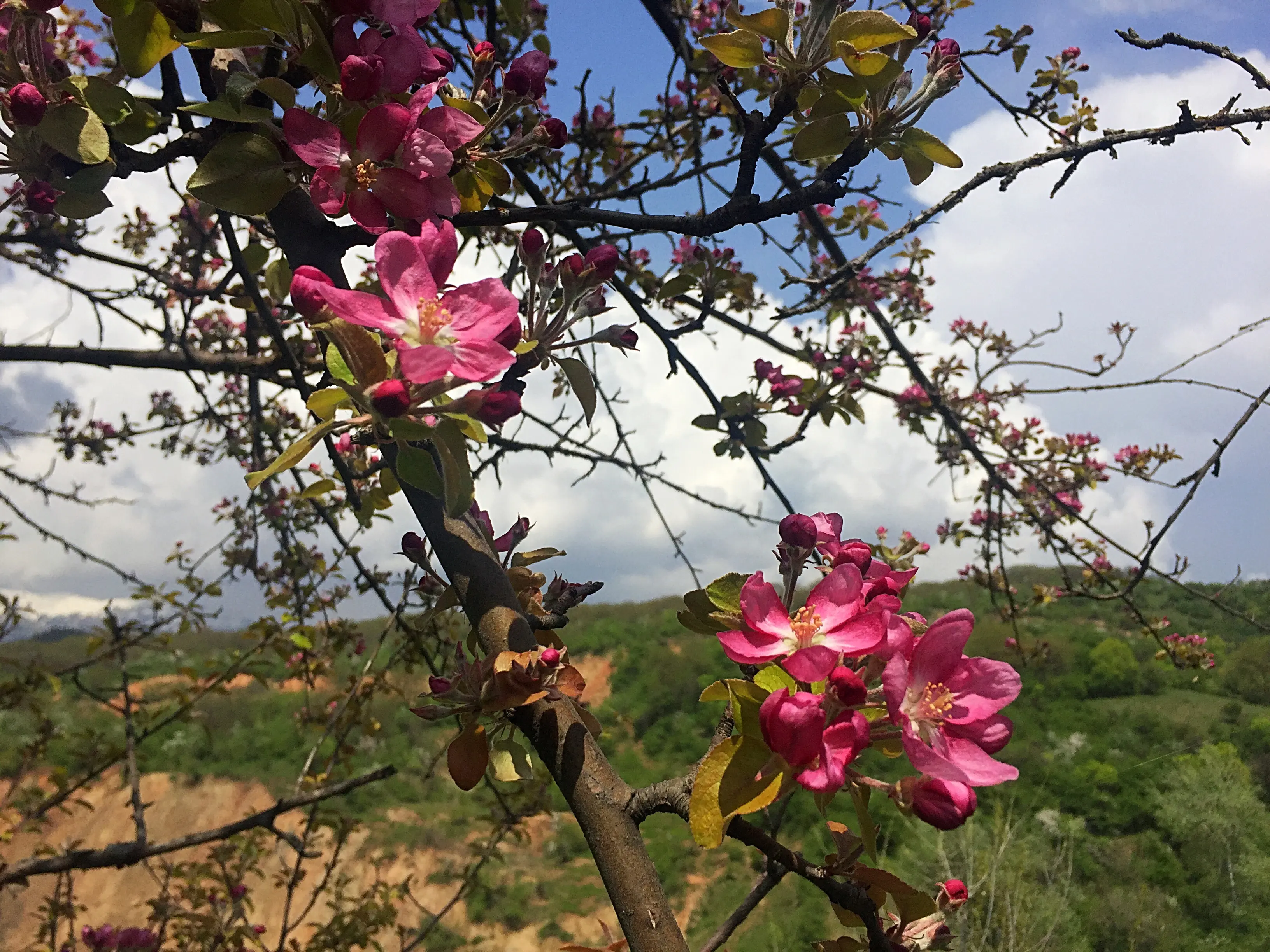Preservation of Central Asian fruit tree forest ecosystems from bacterial pathogen Erwinia amylovora (fire blight)

At a glance
- Co-project leader : Dr. Fabio Rezzonico, Prof. Dr. Theo Smits
- Project team : Mirjam Kurz
- Project status : completed
- Funding partner : SNSF (r4d-Programm / Projekt Nr. 177515)
- Project partner : Kyrgyz–Turkish Manas University / Faculty of Agriculture, Scientific Society Tethys
- Contact person : Theo Smits
Description
Fire blight is a severe bacterial disease of apple and pear that can quickly destroy whole orchards. In the last few years it arrived also in Central Asia, where pomaceous fruit plants represent the dominant species in mid-altitude forests and constitute a critical foundation for the entire ecosystem. Fire blight is thus a major threat not only for the living genetic resources represented by native apple trees (Central Asia is the center of origin of domesticated apple), but represents also a menace for the already endangered flora and fauna species that are dependent thereof and the local rural economies that subsist on the forest’s natural resources.
In this R4D project, we aim to understand and minimize the impact of fire blight in Central Asia using a multifaceted approach that ranges from field-applicable molecular diagnostic procedures and investigation of the dissemination patterns to the development of locally-adapted phytosanitary strategies and conservation efforts. This R4D project will run for four years and is conducted jointly with the Kyrgyz–Turkish Manas University in Bishkek (Kyrgyzstan) and the Tethys Scientific Society in Almaty (Kazakhstan).
Further information
Publications
-
Sadunishvili, Tinatin; Gaganidze, Dali; Amashukeli, Nanuli; Aznarashvili, Mariam; Kharadze, Shorena; Sturua, Neli; Rezzonico, Fabio,
2024.
Journal of Plant Pathology.
Available from: https://doi.org/10.1007/s42161-024-01649-5
-
Rezzonico, Fabio; Emeriewen, Ofere Francis; Zeng, Quan; Peil, Andreas; Smits, Theo H.M.; Sundin, George W.,
2024.
Journal of Plant Pathology.
Available from: https://doi.org/10.1007/s42161-023-01581-0
-
Kurz, Mirjam; Sultangaziev, Ormon; Szalatnay, David; Sodonbekov, Ishenbai; Naizabayeva, Dinara A.; Milikbekova, Muqaddas; Akbarsho, Solimshoh; Bobushova, Saykal; Doolotkeldieva, Tinatin; Rezzonico, Fabio; Smits, Theo H. M.,
2023.
An app for apples : citizen-led mapping of fire blight in Central Asia.
Journal of Plant Pathology.
Available from: https://doi.org/10.1007/s42161-023-01406-0
-
Maltseva, Elina R.; Zharmukhamedova, Galiya A.; Jumanova, Zhulduzay K.; Naizabayeva, Dinara A.; Berdygulova, Zhanna A.; Dmitriyeva, Karina A.; Tezekbayeva, Botakoz; Khassein, Altyn; Skiba, Yuriy A.; Malakhova, Natalya P.; Ismagulova, Gulnara A.; Rezzonico, Fabio; Smits, Theo H. M.,
2023.
Fire blight cases in Almaty Region of Kazakhstan in the proximity of wild apple distribution area.
Journal of Plant Pathology.
Available from: https://doi.org/10.1007/s42161-023-01416-y
-
Maltseva, Elina R.; Zharmukhamedova, Galiya A.; Jumanova, Zhulduzay K.; Naizabayeva, Dinara A.; Berdygulova, Zhanna A.; Dmitriyeva, Karina A.; Soltanbekov, Sagi S.; Argynbayeva, Assel M.; Skiba, Yuriy A.; Malakhova, Natalya P.; Rezzonico, Fabio; Smits, Theo H.M.,
2022.
Assessment of fire blight introduction in the wild apple forests of Kazakhstan.
Biodiversity.
23(3-4), pp. 123-128.
Available from: https://doi.org/10.1080/14888386.2022.2141880
-
Kurz, Mirjam; Carnal, Simon; Dafny-Yelin, Mery; Mairesse, Orly; Gottsberger, Richard A.; Ivanović, Milan; Grahovac, Mila; Lagonenko, Alexander L.; Drenova, Nataliya; Zharmukhamedova, Galiya; Doolotkeldieva, Tinatin; Smits, Theo H.M.; Rezzonico, Fabio,
2021.
Phytopathology Research.
3(18).
Available from: https://doi.org/10.1186/s42483-021-00096-9
-
Doolotkeldieva, Tinatin; Bobushova, Saikal; Carnal, Simon; Rezzonico, Fabio,
2021.
Journal of Plant Pathology.
103(Suppl 1), pp. 109-120.
Available from: https://doi.org/10.1007/s42161-021-00752-1
-
Gaganidze, Dali; Sadunishvili, Tinatin; Aznarashvili, Mariam; Abashidze, Ekaterine; Gurielidze, Manana; Carnal, Simon; Rezzonico, Fabio; Zubadalashvili, Manana,
2020.
Fire blight distribution in Georgia and characterization of selected Erwinia amylovora isolates.
Journal of Plant Pathology.
103(Suppl 1), pp. 121-129.
Available from: https://doi.org/10.1007/s42161-020-00700-5
-
Escursell, Mireia Marcé; Roschi, Alexia; Smits, Theo; Rezzonico, Fabio,
2020.
Journal of Plant Pathology.
103(Suppl 1), pp. 99-108.
Available from: https://doi.org/10.1007/s42161-020-00600-8